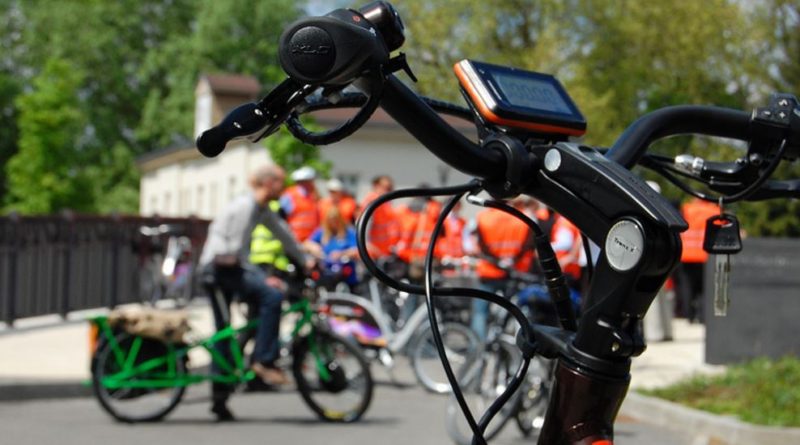Number of USA electric bike importers jumps 340% year-on-year, suggests industry analyst

eCycleElectric’s annual study of electric bike sales in the United States places 2017’s tally north of 263,000, a new record for the market.
Of that number, 215,000 were believed to have been imported into the USA during the year, with a further 15,000 thought to have been built domestically by various assemblers.
“Knowing that we do not find all the imports, from past experience, we add 10% as a likely margin of error,” started Ed Benjamin of eCycleElectric. “This is in line with last year’s estimates and consistent with projections.”
According to Benjamin, all the available data now points toward a 20 to 30 percent growth in imported e-Bikes, though he concedes that the available import data alone would suggest a figure closer to 10 to 15 percent.
“The number of entities importing e-Bikes has grown significantly – approximately 600 entities in 2017, as compared to 135 in 2016. Of these, 15% are importing at 250 units per container or more, whereas 85% are importing at less than 250 units. Of those smaller entities, 50% imported less than 100 units per container. 25% imported in quantities smaller than 20 units,” says Benjamin of his study. “This suggests that there are greater numbers of people either experimenting with importing e-Bikes, or in the early stages of starting a new e-Bike business. The vast majority of these e-Bikes were imported from China and Taiwan.”
As has been discussed previously on CI.N, with President Trump’s stance on trading with China, this reliance on imports from the far east may put the bicycle business in a precarious position.
Discussing the rapid growth in businesses selling into the electric market, Benjamin suggests “There appear to be about 120 -150 active brands promoting and selling e-Bikes in the USA. The range reflects both the rapid entrance and exit of players, and the hard-to-categorize players from crowd funding projects.”
Electric bike’s lack of specific HS Code do cloud the exact strength of the market, something that the UK has only recently addressed following a notable and unusual spike in figures. Much of the deemed to be erroneous data was speculated to have been clouded by imports of electric hoverboards and similar e-devices. This misrepresentation has been encountered by Benjamin with regularity in the 2017 study and accounted for in the data.
“Our figure of 215,000 imported bikes is intended to realistically encompass bikes that are either poorly defined within the record, not described with any of the 60 terms we search under, or simply mislabeled entirely,” said Benjamin. “The 15,000 assembled in the USA bikes is based on data gathered through our relationships with USA assemblers, retailers, brand managers, OEMs, component suppliers, and sales reps.”
Imports are one thing, but are the bikes selling? Benjamin thinks so.
“An easy observation to make is that these numbers merely reflect the e-Bikes that entered the market, not bikes that were sold through – an electric bike may of course languish in a warehouse for years before being sold. However, as in 2016, we feel that if this were a widespread problem, grumbling in the supply side would be heard loudly and clearly. As it is, grumbling has been absent, (in fact, happy claims of increased sales are the norm) so we feel that most of the e-Bikes entering the market are being sold, and easily. 2017 appears to have been a smooth year of growth for e-Bikes in the USA in general.”
With Europe and the Far East leading the electric bike charge, it is still widely accepted that the USA has some way to go before e-Bikes are welcomed with open arms by all in the business.
“An odd characteristic of the e-Bike market is that the retailers most capable of selling e-Bikes are often opposed to e-Bikes in general, and even those who embrace e-Bikes are usually ineffective at selling them – when compared to the e-Bike specialists, Amazon, direct to consumer sales, etc,” says Benjamin.
With the potential to once again turn a profit from bike sales, why the reluctance?, asks Benjamin.
“The dollars are greater than the units, when compared to normal bicycles. With the average e-Bike somewhere between $1,000 and $3,000, with many examples reaching towards (or even past) $6,000, this small volume represents a larger slice than is immediately obvious. The average value of a human powered bike is far less.
“Thus we feel that the overall picture of the market is this: Sales are steady, and in some cases, up – the successful brands are continuing to be successful, while less-successful brands are slowly being culled. However, there appears to be a burst of entrepreneurial optimism, leading many individuals and companies to experiment with starting their own e-Bike business, or add e-Bikes to their existing retail selection. Overall, the industry is healthy and growing, and we look forward to 2018 as a profitable and exciting period.”
For regular updates on the market, as well as specialist education and opinion, bookmark our dedicated electric bike tab here.



